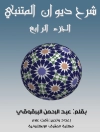Seminar paper from the year 2012 in the subject Didactics for the subject English – Grammar, Style, Working Technique, grade: 3, 0, University of Freiburg, language: English, abstract: “Metaphor has a long and controversial history, going back at least to the views of Aristotle, who spoke both of metaphor’s brilliance and dangers. However, discussions of metaphor continued to be the realm of philosophers and poets until the birth of disciplines of linguistics and verbal learning.” [Mey: 1676]
As time went by, more and more researchers showed their interest in the mysterious topic of metaphor and started to carry on researches. While Aristotle limited metaphors to four types, which are (1) genus for species (e.g. “my ship stands here”), (2) species for genus (e.g. “ten thousand noble deeds has Odysseus accomplished”), (3) species to species (“drawing off the life with bonze” & “cutting with slender-edges bronze”) and (4) analogy (‘b’ to ‘a’ as ‘d’ is to ‘c’: e.g. “the day’s old age” & “life’s sunset”) [comp. Pramling], subsequent researchers came up with several new theories and undertook many studies to support their ideas concerning the question of how human beings are able to understand metaphors and which areas of the brain are involved in processing metaphorical data. The publication of Lakoff and Johnson’s work in 1980 changed the research concerning metaphors significantly and shifted it to a search for general cognitive principles. The new idea was that „metaphor is largely a matter of thought“. [Hadl: 27]
Table of Content
1. Introduction
2. Metaphors
3. Processing nonliteral language
3.1. Standard pragmatic model: Sequential processing
3.2. The direct Access view: Context-Dependent-Hypothesis
3.3. Graded salience hypothesis
3.4. Testing traditional hypotheses
4. The role of hemispheres
4.1. Questioning the special role of the right hemisphere
4.2. Repetitive Transcranial Magnetic Stimulation
4.3. Visual Half-Field Priming
4.4. Neuroimaging
5. Recent research
6. Conclusion
7. Bibliography












